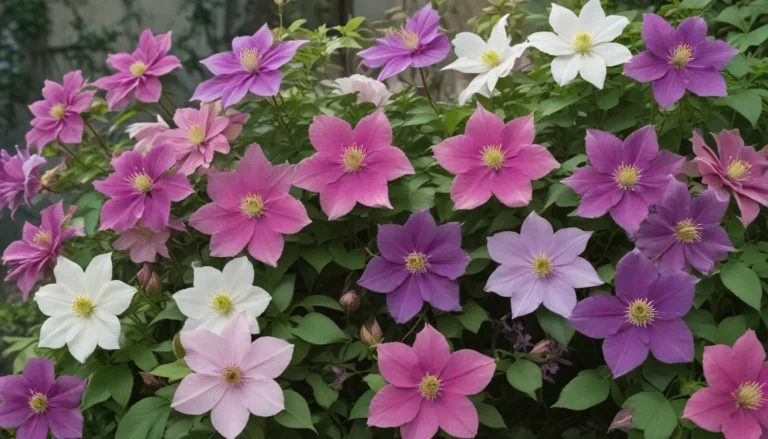Ultimate Guide: Growing and Caring for Lovely Larkspur Flowers

Consolida spp.
Living where winter is cold and snowy has its perks – one of them being the joy of seeing wildflowers bloom in spring. Whether it’s wild roses, bluebells, or fireweed in Alaska, or arrowleaf balsamroot, lupines, and wild larkspur in Montana, these beautiful flowers make every cold day worthwhile.
Even if you don’t face freezing winters, you can still enjoy these magical blooms. Larkspur, with its blue, violet, rose, and white blossoms, adds a touch of elegance to any garden.
If you’re looking to grow this stunning annual in your garden, this comprehensive guide has got you covered.
What You’ll Learn
- What Are Larkspur?
- Cultivation and History
- Propagation
- How to Grow
- Growing Tips
- Pruning and Maintenance
- Cultivars and Mixes to Select
- Managing Pests and Disease
- Best Uses
- Quick Reference Growing Guide
What Are Larkspur? (And Are They the Same as Delphiniums?)
With cheerful names such as “Larks heele” and “knight’s-spur”, larkspur holds a special place in the world of flowers. Originating from the 16th century, these blooms were believed to have unique powers against scorpions.
Despite similarities, annual larkspur and perennial delphinium are distinctly different flowers, though they are often referred to by the same common name. Consolida and Delphinium are the genera for these plants, with forty species in the Consolida genus.
Some common species include C. ajacis, C. orientalis, C. pubescens, C. regalis, and C. tenuissima, each uniquely beautiful and thriving in various regions.
Cultivation and History
Larkspur made its way to England from Italy between 1550 and 1573, eventually spreading to the Americas and naturalizing in various regions. Hardy and self-seeding, these flowers are ideal for USDA Hardiness Zones 2 to 11.
Growing up to 36 to 48 inches tall with spikes of colorful flowers, larkspur adds a vibrant touch to any garden.
Larkspur Plant Propagation
Propagating larkspur from seeds is the best way to grow these annuals. Cold stratification is key for germination, whether sowing indoors or outdoors.
Sowing indoors four to six weeks before the average last frost date in Zones 2 to 5, or outdoors two weeks after the last frost date in Zones 6 to 11, ensures successful growth of these stunning flowers.
How to Grow Larkspur Flowers
Larkspur thrives in a wide range of soil pH but prefers moderately rich, well-draining soil. Watering once or twice a week, fertilizing monthly, and providing staking if needed are essential steps in caring for these plants.
Pruning spent flower spikes and promptly addressing pests and disease are vital for maintaining healthy larkspur plants.
Growing Tips
- Provide staking if needed
- Water once or twice a week with one inch of water, as needed
- Fertilize every month with a general purpose 10-10-10 NPK fertilizer
Pruning and Maintenance
Promptly prune spent flower spikes for extended blooming periods. Address pests like aphids and slugs with appropriate measures to keep your larkspur healthy and vibrant.
Allowing the flowers to go to seed promotes self-seeding, ensuring a recurring display of these stunning blooms in your garden.
Larkspur Cultivars and Mixes to Select
From ‘Blue Bell’ to ‘Lilac Spire’ and the ‘Rocket Larkspur Mix’, there is a vast array of cultivars and mixes available to suit every gardener’s taste. Whether you prefer blues, purples, pinks, or whites, there is a larkspur variety for you.
Managing Pests and Disease
Aphids and slugs are common pests that can affect larkspur plants. Neem oil-based insecticides and slug control methods can help keep these pests at bay.
While larkspur is generally pest and disease-resistant, keeping an eye out for issues like powdery mildew and root rot is essential in preventing disease spread.
Best Uses for Larkspur Flowers
Perfect for wildflower gardens, mixed borders, or even as cut flowers in vases, larkspur is a versatile and stunning addition to any garden. Pair them with companion plants like corn poppies or lavender for a vibrant display.
Consider sowing larkspur seeds in containers for easy maintenance and a burst of color wherever you place them.
Quick Reference Growing Guide
- Plant Type: Flowering annual
- Flower / Foliage Color: Blue, purple, pink, white/green
- Native to: North Africa, Mediterranean, northern Europe, western Asia
- Water Needs: Moderate
- Hardiness (USDA Zone): 2-11
- Tolerance: Some frost
- Bloom Time / Season: Spring-summer
- Soil Type: Moderately rich
- Exposure: Full sun to part shade (in hot climates)
- Soil pH: 5.7-7.0
- Spacing: 12 inches
- Soil Drainage: Well-draining
- Planting Depth: 1/4 inch
- Companion Planting: Corn poppies, lavender
Welcome to La-la-larkspur Land
Growing larkspur in your garden is a rewarding experience that will brighten up your space with its elegant blooms. By following these comprehensive tips and guidelines, you can enjoy the beauty of larkspur in your garden all season long.
Share your larkspur growing stories and questions in the comments below! And be sure to explore more flower growing tips in our other informative articles.





